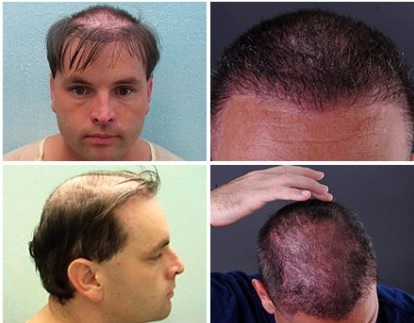Fortunately though, a few forward-thinking surgeons like Dr U decided to take follicular unit extraction, or FUE, and experiment with its capacity for acute precision and minimal invasiveness. Dr U thus developed the Advanced FUE hair transplant surgery using his patented technology called the UGraft Revolution to enable the utilization of body and beard and nape grafts for various hair restoration indications. A little over ten years ago, these pioneering practitioners discovered that non-traditional donor hair could survive long term. And these donor follicles, being nape, beard, and body hair, also blended deceivingly well with surrounding hair when implanted in the scalp.
Dr U’s UGraft revolution and its application in body hair transplant surgery is illustrated in this short video:
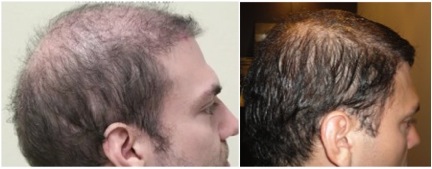
Body hair transplant surgery changed this patient’s life.
Body Hair Transplant Surgery: How It Works
Just like FUE, body hair transplant (BHT) using the UGraft advanced FUE methods rests on the individual excision of grafts from the donor area. By removing the grafts this way, as opposed to the “traditional” strip harvesting (FUT) method—which removes the grafts in a linear strip of skin from the mid-occipital scalp)—the surgeon massively cuts down on resultant scarring and other potential risks, like nerve damage.
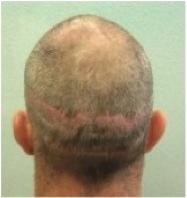
The infamous strip scar resulting from FUT.
Grafts consist of follicular units, which can be one to four hairs naturally growing in a cluster. Today, the surgeon only needs a .8-1.2mm punch to remove each follicular unit. This punch is attached to the end of a manual or electrically powered handheld device. Once a viable graft is removed from the scalp, it is retained in a holding solution until the time of implantation.
This specialized procedure can harvest donor hair from the beard, shoulders, chest, arms, stomach, and legs. The one-by-one extraction approach is a long, tedious, labor-intensive technique to perform. However, it has the capacity to achieve more refined and fulfilling results than have ever been seen in hair restoration history.
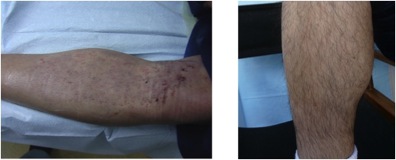
Body hair transplant surgery can excise donor hair from the legs and result in negligible scarring.
Body Hair Transplant Surgery: PROCEDURES an Results
To view results of body hair transplant by Dr U, visit the most robust gallery of its kind here.
Body hair transplant surgery is remarkable for its ability to give a full head of hair to a patient who once suffered severe baldness. However, this technique may be even more noteworthy for its ability to repair those who are severely bald due to reasons other than progressive pattern baldness. These are usually repair patients with the following history:
- Prior botched hair restoration surgery
- Burns or scars from some type of accident
- Traction alopecia/central cicatricial centrifugal alopecia
All of the above have the ability to leave a patient scarred and with insufficient scalp donor hair. However, the most common application are those patients who’ve had hair restoration elsewhere. Botched surgeries can result from the work of a novice practitioner or an antiquated technique, like scalp reduction. With the use of donor hair from non-traditional sources, these patients are usually repairable.
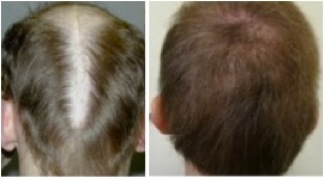
Body hair transplant surgery repaired this patient’s slot formation.
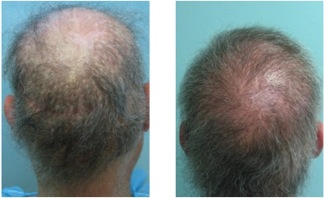
Body hair transplant surgery also repaired this patient’s botched prior procedures.
FREQUENTLY ASKED QUESTIONS
Who is a candidate for the use of body hair?
Candidates for body hair transplant surgery must be in good overall health and fall in line with the following list of additional prerequisites:
- Must be severely bald/have insufficient scalp donor hair. Body hair is secondary to scalp hair in terms of blendability and graft survival, and is only used for extreme cases.
- Must be over 24 years old. This is a general rule of thumb for all hair restoration clinics, due to the progressive nature of androgenic alopecia. For a surgeon to operate on a younger patient almost guarantees the need for a second future surgery to account for more hair loss.
- Should not have allergies to anesthesia, history of blood clotting, or tendency to scar of keloid.
- Extremely curly or kinked hair is not ideal.
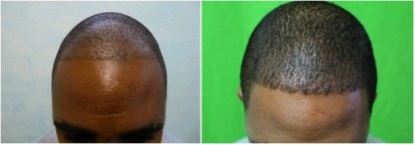
Although African Americans tend to have extremely curly hair, some cases are still restorable.
What is the biggest cause for concern with using body hair to reverse baldness?
The biggest difficulty in executing BHT is finding a surgeon with an adequately advanced skill level to carry it out successfully. Other than that, some areas of concern are that body hair will not exactly match that of scalp hair and may differ in color, texture, growth rate, and maximum growth length. Body hair also does not have as high of a long-term graft survival rate as donor hair from the head. The survival rate with non-head hair is approximately 80%.
How much does it cost?
The cost is usually charged at a dollar amount a per-graft, which can range from $5 to $12 per graft, depending on the clinic. Since those who require body hair transplant surgery are typically severely bald, the surgeon will have to harvest several thousand grafts to achieve adequate density. For example, for someone who needs 8,000 grafts, the cost could be $40,000. However, there are ways to save money, if the clinic charges on a sliding scale or gives discounts for promotional use of before and after images.
Here is a patient example where a Norwood 7 case benefited significantly from the use of body follicles. Read more here.
Our Youtube Hair Restoration playlist: Dr Umar YouTube Play List

